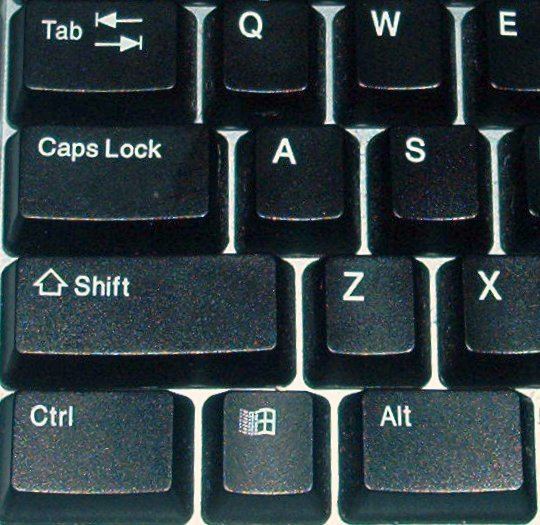 | ||
The shift key is a modifier key on a keyboard, used to type capital letters and other alternate "upper" characters. There are typically two shift keys, on the left and right sides of the row below the home row. The shift key's name originated from the typewriter, where one had to press and hold the button to shift up the case stamp to change to capital letters; the shift key was first used in the Remington No. 2 Type-Writer of 1878; the No. 1 model was capital-only.
Contents
On the US layout and similar keyboard layouts, characters that typically require the use of the shift key include the parentheses, the question mark, the exclamation point, and the colon.
When the caps lock key is engaged, the shift key can be used to type lowercase letters on many operating systems, but not macOS.
Labeling
The keyboard symbol for the Shift key (which is called Level 2 Select key in the international standard series ISO/IEC 9995) is given in ISO/IEC 9995-7 as symbol 1, and in ISO 7000 “Graphical symbols for use on equipment” as a directional variant of the symbol ISO-7000-251. In Unicode 6.1, the character approximating this symbol best is U+21E7 upwards white arrow (⇧). This symbol is commonly used to denote the Shift key on modern keyboards (especially on non-US layouts and on Apple keyboards), sometimes in combination with the word “shift” or its translation in the local language. This symbol also is used in texts to denote the shift key.
Uses on computer keyboards
On computer keyboards, as opposed to typewriter keyboards, the shift key can have many more uses:
On some keyboards, if both shift keys are held down simultaneously only some letters can be typed. For example, on the Dell keyboard Model RT7D20 only 16 letters can be typed. This phenomenon is known as "masking" and is a fundamental limitation of the way the keyboard electronics are designed.
Windows specific
The following is a list of actions involving the shift key for the Microsoft Windows operating system.
